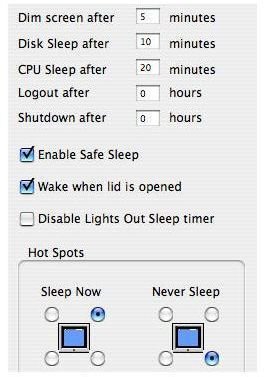
- #MAC POWER MANAGER UPGRADE#
- #MAC POWER MANAGER PRO#
- #MAC POWER MANAGER SERIES#
- #MAC POWER MANAGER MAC#
It is, however, more than possible that the M1 Ultra needs a lot of cooling.
#MAC POWER MANAGER MAC#
Again, Apple managed to cool those same processors inside the MacBook Pro, and there's far less room for airflow inside that laptop than there is in the much bigger Mac mini internal cavity.

I can't imagine it was a heat/fan issue that kept the mid-range M1 processors from finding a home inside a Mac mini. In fact, earlier this month, YouTuber Snazzy Labs proved that the M1 Mac mini logic board was small enough for them to be able to actually hack it into a half-size case.
#MAC POWER MANAGER PRO#
Given that they were able to squeeze those chips into the super-svelte MacBook Pro, there didn't seem to be any reason to think Apple wouldn't be able to put either an M1 Pro or M1 Max into a Mac mini case.
#MAC POWER MANAGER UPGRADE#
I have to admit I was surprised not to see a Mac mini upgrade with the M1 Pro and M1 Max chips. Without a doubt, there's a huge jump from the base M1 chip of the currently shipping M1 Mac mini all the way to the M1 Ultra of the Mac Studio. The new Mac Studio overcomes that, providing all the ports the Intel Mac mini offered and then some.īecause Apple Silicon is all based on SoC architecture, it's the chip that determines the machine's capabilities. As we discussed in the past, the base M1 was rather limited in the number of ports it supported. The Intel version has more ports than the M1 version. In fact, in Apple's announcement yesterday, they promised a new Mac Pro - as a teaser for a different event. It's hard to imagine just how powerful machines will become once they're able to reduce the die size even more. With the announcement of the M1 Ultra, Apple is showing off its interposer skills - the ability to fuse chips together inside the package to create even more powerful systems on a chip.Īlso: Introducing my design for an Apple Silicon-based Mac Proīut this is only the first generation of Apple's in-house Mac chip development. Apple proved its ability to scale chip size with last year's introduction of the M1 Pro and M1 Max.
#MAC POWER MANAGER SERIES#
The new Mac Studio is 7.7 inches square.Īll of this is made possible by Apple's move to its own silicon in its M1 series of chips. In terms of footprint, the 2019 Mac Pro is 17.7 inches deep by 8.5 inches wide. That's one-fifteenth the physical volume. The new Mac Studio takes up 0.115 cubic feet. The 2019 Mac Pro takes up 1.832 cubic feet in terms of physical volume. If you see inaccuracies in our content, please report the mistake via this form. If we have made an error or published misleading information, we will correct or clarify the article. Our editors thoroughly review and fact-check every article to ensure that our content meets the highest standards. Our goal is to deliver the most accurate information and the most knowledgeable advice possible in order to help you make smarter buying decisions on tech gear and a wide array of products and services. ZDNET's editorial team writes on behalf of you, our reader.

Indeed, we follow strict guidelines that ensure our editorial content is never influenced by advertisers. Neither ZDNET nor the author are compensated for these independent reviews. This helps support our work, but does not affect what we cover or how, and it does not affect the price you pay. When you click through from our site to a retailer and buy a product or service, we may earn affiliate commissions. And we pore over customer reviews to find out what matters to real people who already own and use the products and services we’re assessing. We gather data from the best available sources, including vendor and retailer listings as well as other relevant and independent reviews sites.

ZDNET's recommendations are based on many hours of testing, research, and comparison shopping.


 0 kommentar(er)
0 kommentar(er)
